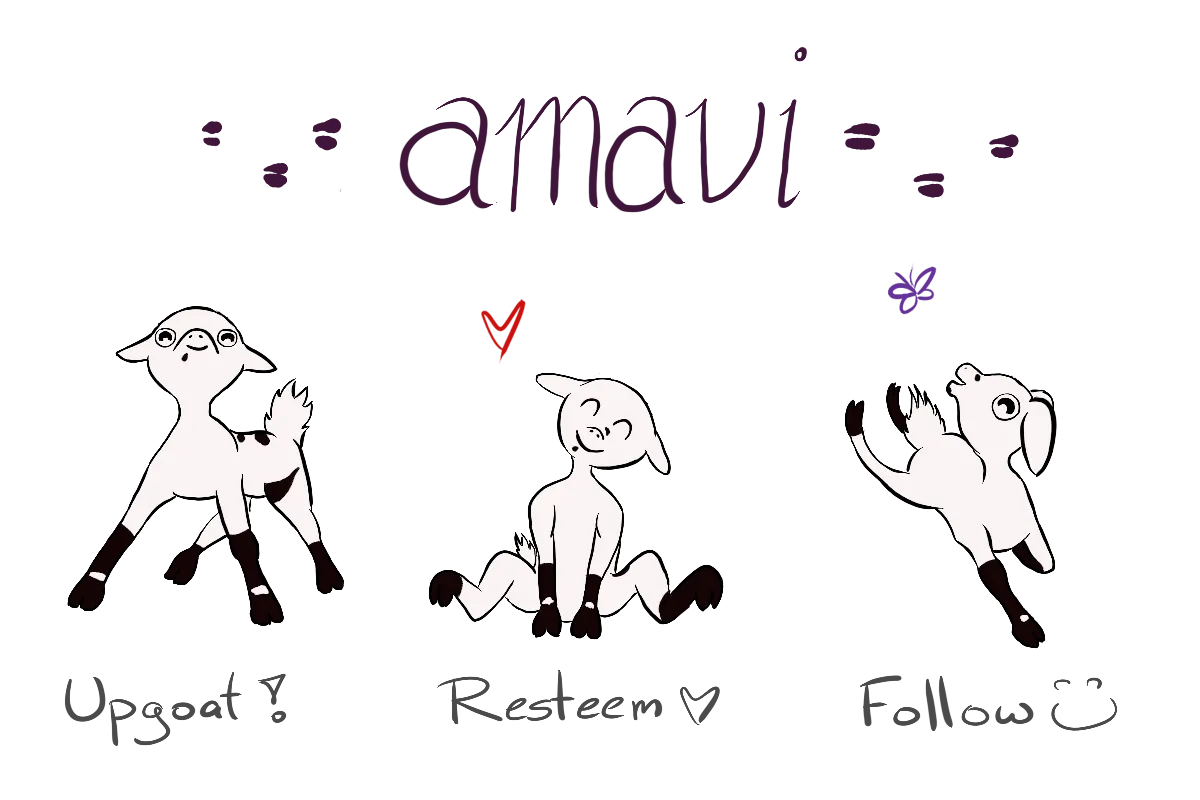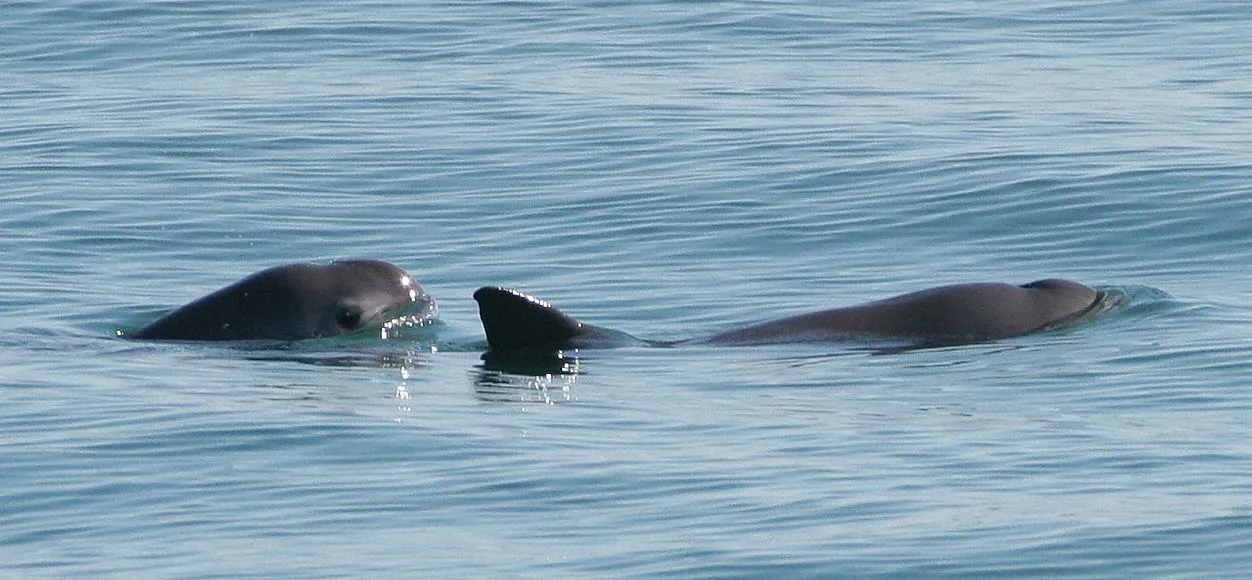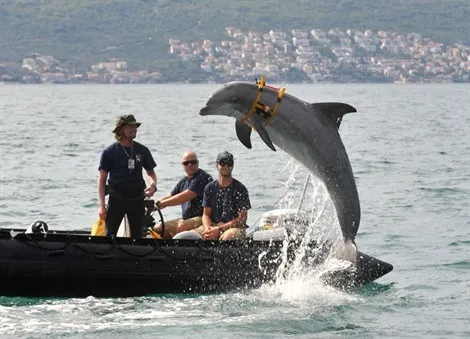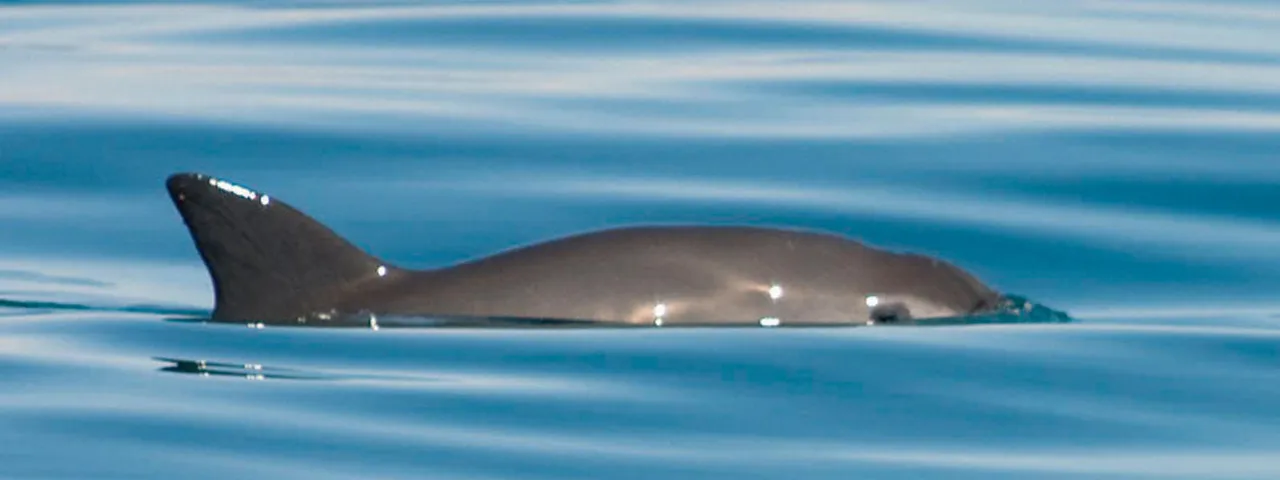Here we have the world’s rarest marine mammal that is sadly on the edge of extinction. Not discovered until 1958, we are now on the brink of losing this amazing little species all together.
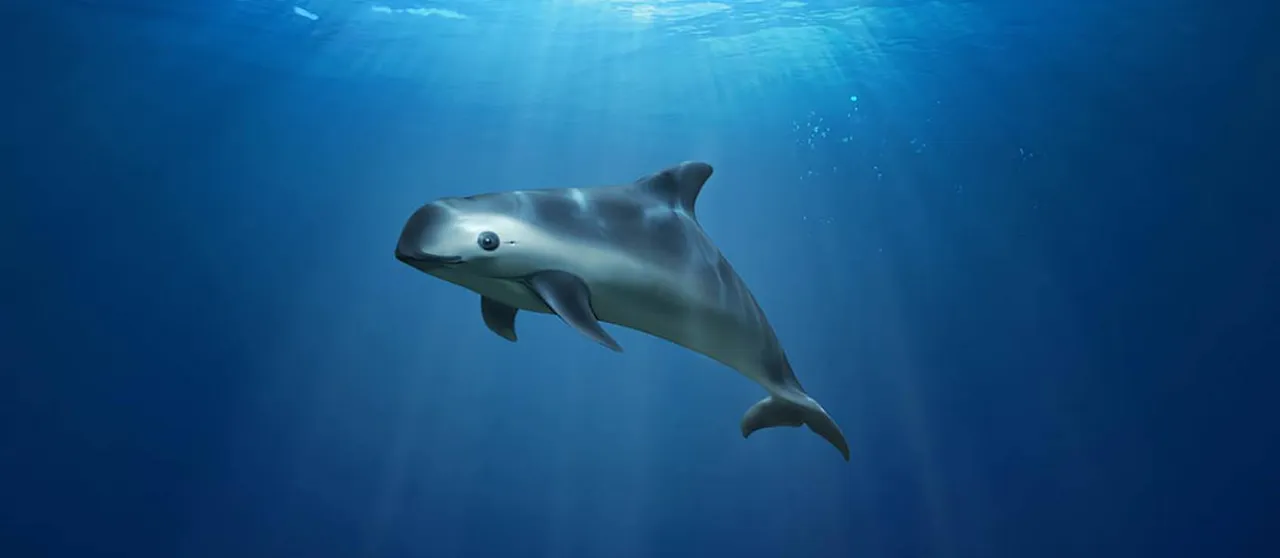
Throughout this post there are potentially upsetting photographs
Description
At just 120-150cm in length the Vaquita is the world’s smallest cetacean, with its dark grey skin on top fading to a pale grey or white below its body they have very distinctive rings around their eyes and mouth and have a dark stripe from their chin to the base of their flipper. Weighing at approximately 55kg they are similar in size and shape to that of the Harbour Porpoise (Phocoena phocoena) although they are much more slender in appearance and have much larger fins that increase the surface area of their body that facilitates heat dissipation in the warm waters it lives in.Habitat and Hunting
The Vaquita lives in shallow lagoons along the shorelines for the strong tide and high food availability. They are very rarely seen in waters deeper than that of 30m. They are the only species of porpoise that live in warm waters with temperatures ranging from 14°C to 30°C with the ability to tolerate such large fluctuations in temperature.Having the most limited distribution of any other cetacean it is only found in the shallow waters at the Northern end of the Gulf of California, Puertecios, Baja California Norte, North and East to Puerto Peflasco and Sonora.
It is also commonly found around the Colorado River delta with the highest density of the population found offshore of San Felipe, Rocas Consag and El Golfo de Santa Clara.Sadly, most of what we know about the Vaquita is based upon examining dead specimens. To find out what they eat scientists study the contents of its stomach which consisted of Grunt fish, Gulf Croakers and Squid found primarily along the seabed’s. The prey it hunts is also known to produce the same high-frequency clicks so rather than using its own echolocation, it is thought that the Vaquita will follow the sound of its prey.
Behaviour and Reproduction
Due to its elusive nature and tiny population that surfaces very slowly to not disturb the water’s surface when it breathes, then disappearing for long periods of time it’s that of its cryptic behaviour and its rarity are the reasons that very little is known about the biology of this incredible little species.
It was originally thought that this species was solitary generally only seen travelling alone or in very small pods of only 1-3 individuals until very recently seen swimming in a larger group of up to 10. Like other cetaceans, they use sonar as a method of communication, navigating through its environment and hunting.
Individuals reach sexual maturity when they reach the length of around 1.3m that is usually between the age of three to six years old. The reproduction of the Vaquita is seasonal with the young born in March, after the gestation period of around 10-11 months. The mother will not give birth again for approximately two years and an age range of up to 21 years that would mean a cow will produce up to 8 calves in her lifetime should she follow the 2-year break.
Threats
In 2007, it was estimated that there were around 150 Vaquita remaining in the world that has been rapidly declining with now only 30 individuals are currently known. This means that the Vaquita is classified by the IUCN Red List as Critically Endangered species due to intensive commercial and illegal fishing. Gillnets are set out to catch species of fish one of which The Totoaba which is also a Critically Endangered Fish that has primarily been the downfall to the Vaquita. Vaquitas regularly become entangled within the gillnets and trawl nets that have claimed the lives of an estimated 30-85 individuals of this special cetacean per year leaving now only 30 known Vaquitas left.Once again, the blame lies with China due to its high demand for the Totoaba’s swim bladder that today has an International Trade ban under CITES in an attempt to stop both species becoming extinct.
Thousands of swim bladders are dried and then smuggled out of Mexico and exported through America where a Fisherman can receive up to $4,000 for just 1lb of the Totoaba swim bladder. This illegal trading is currently driving the Vaquita to Extinction. The WWF estimates that the Vaquita will be extinct potentially by the end of 2018 – NEXT YEAR if the fishery bycatch is not banned and removed immediately.Conservation Efforts
The majority of the Vaquitas habitat is within the Upper Gulf of California and the Colorado River Delta Biosphere Reserve. Any form of fishing within this area is strictly prohibited and there are gillnet restrictions is zones surrounding their protected areas yet sadly these restrictions are rarely enforced. In 1997, the Mexican Government created the International Committee for the Recovery of the Vaquita (CIRVA) which is made up of representatives of the government and scientists from Mexico, USA and the UK. 2000, saw the WWF and other organisations come together and find alternative fishing methods for the locals and the communities who depend on the Gulfs resources for their survival.
They are committed to improve existing Vaquita-Safe fishing technologies such as smaller trawls to catch shrimp and traps used to catch fish and to also substitute the gillnets which from June 2017 are permanently prohibited in the Upper Gulf of California, the now only place the Vaquita exists on Earth. The WWF is working tirelessly to increase the response from the Mexican Government, the World Heritage Committee and CITES parties to protect the remaining Vaquitas and to set the path for recovery. However, Failure to act right now will result in the imminent extinction of this incredibly little species.
Bringing them into a Sanctuary
The CIRVA recommended that the capture as many Vaquitas as possible and place them within a Sanctuary sea pen. The VaquitaCPR was formed and the first attempted was carried out in the Autumn 2017. What is incredible is that US trained Navy Dolphins have been trained to seek out the Vaquita and leap out of the water once they have located a specimen which will alert the capture team of their whereabouts. The cetaceans will be temporarily held in the ocean sanctuary off the coast of San Felipe until their natural habitat is made safe which includes the removal of ALL gillnets.
Sounds amazing? Sadly, this didn’t go to plan. On the 18th October 2017, the first captured female calf was quickly released after she began to show signs of stress, on the 4th November 2017, a second Vaquita was caught and the experts saw no signs of stress and moved her to the sea pen.
She travelled calmly and experts were pleased with the result however, after one hour within the pen she became slow and limp so at 7pm, they made the decision to release her back into the open water. It was stated that she took off so fast that she appeared to be a flying fish, but with that speed that she swam away she turned back and swam at high speed back into the side of the pen. Three people including veterinarians dived straight into the water and began to revive her and twice she went into cardia arrest. Sadly, the team lost her at 10:30pm despite their best efforts. They have now suspended the high-risk attempt to save the species.
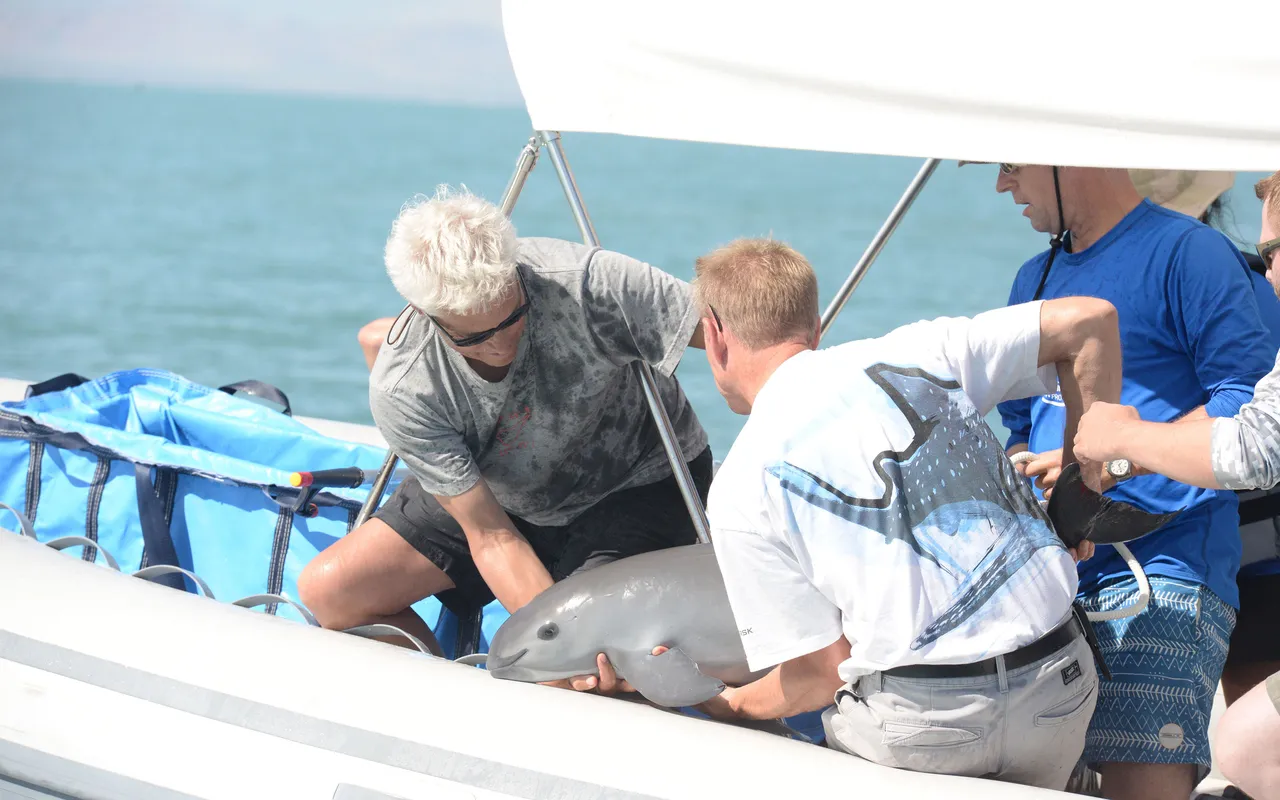
Final thoughts
Usually the section after the conservation efforts would be “how you can help” sadly there is no way that you are able to help save the Vaquita. I hadn’t heard of this species until the media highlights this past year and by the looks of things, we will lose this remarkable species next year. I for one backed the conservation efforts to bring the animals into an ocean sea pen as what other choice do we have to save them? Yet this is no longer a viable option as despite their best efforts to safely capture, move and keep them safe it has not worked. We can only hope that by some miracle we may be able save them from their extinction. I find it completely devastating that there is simply nothing I can do to help them.If you enjoyed this edition of Endangered Species you may be interested in my previous post:
Content Sources
Edge of Existence
WWF
Defenders of Wildlife
SeaWorld
IUCN Red List
